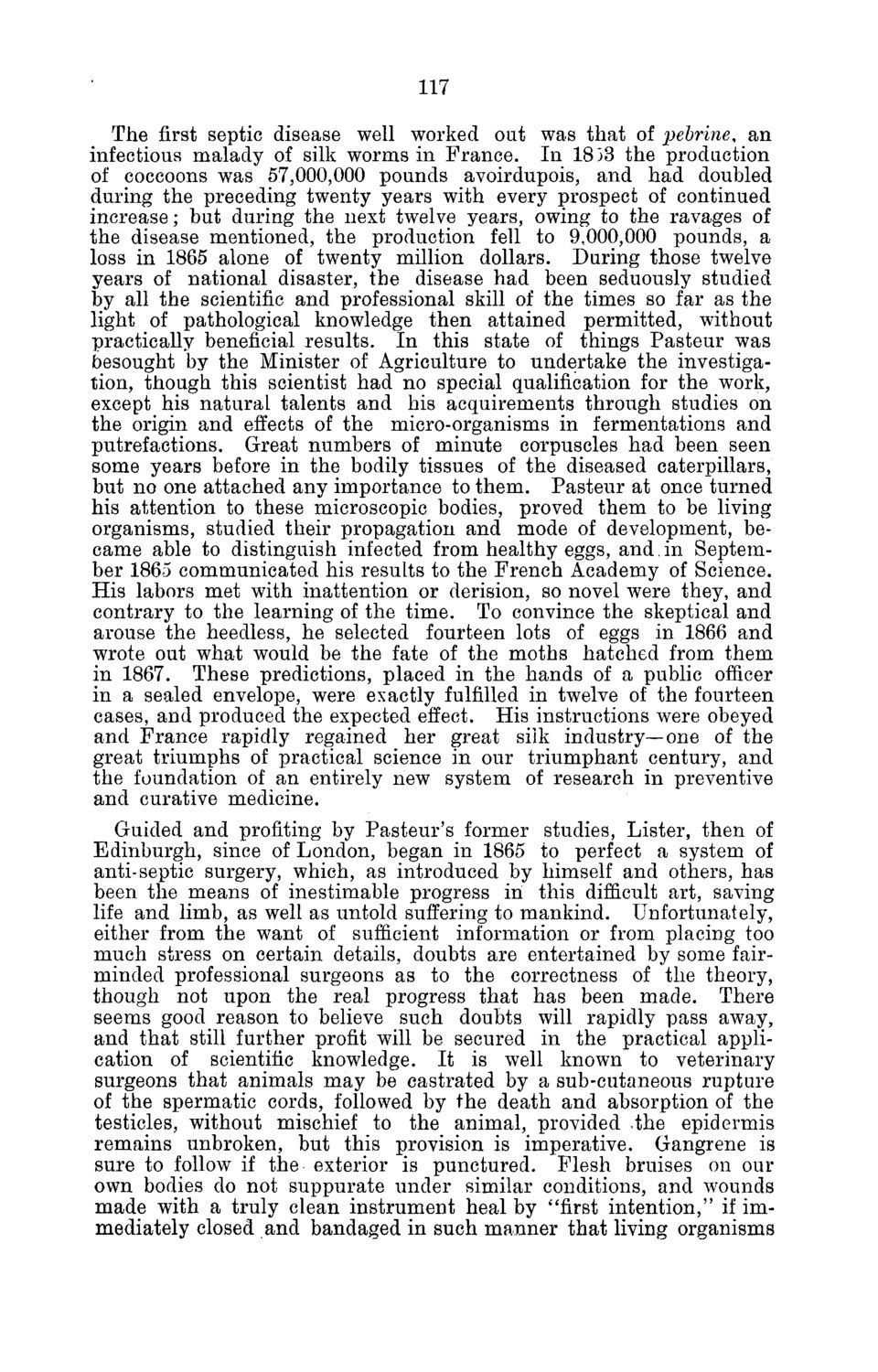| |
| |
Caption: Board of Trustees Minutes - 1882
This is a reduced-resolution page image for fast online browsing.

EXTRACTED TEXT FROM PAGE:
117 The first septic disease well worked out was that of pebrine, an infectious malady of silk worms in France. In 1853 the production of coccoons was 57,000,000 pounds avoirdupois, and had doubled during the preceding twenty years with every prospect of continued increase; but during the next twelve years, owing to the ravages of the disease mentioned, the production fell to 9,000,000 pounds, a loss in 1865 alone of twenty million dollars. During those twelve years of national disaster, the disease had been seduously studied by all the scientific and professional skill of the times so far as the light of pathological knowledge then attained permitted, without practically beneficial results. In this state of things Pasteur was besought by the Minister of Agriculture to undertake the investigation, though this scientist had no special qualification for the work, except his natural talents and his acquirements through studies on the origin and effects of the micro-organisms in fermentations and putrefactions. Great numbers of minute corpuscles had been seen some years before in the bodily tissues of the diseased caterpillars, but no one attached any importance to them. Pasteur at once turned his attention to these microscopic bodies, proved them to be living organisms, studied their propagation and mode of development, became able to distinguish infected from healthy eggs, and,in September 1865 communicated his results to the French Academy of Science. His labors met with inattention or derision, so novel were they, and contrary to the learning of the time. To convince the skeptical and arouse the heedless, he selected fourteen lots of eggs in 1866 and wrote out what would be the fate of the moths hatched from them in 1867. These predictions, placed in the hands of a public officer in a sealed envelope, were exactly fulfilled in twelve of the fourteen cases, and produced the expected effect. His instructions were obeyed and France rapidly regained her great silk industry—one of the great triumphs of practical science in our triumphant century, and the foundation of an entirely new system of research in preventive and curative medicine. Guided and profiting by Pasteur's former studies, Lister, then of Edinburgh, since of London, began in 1865 to perfect a system of anti-septic surgery, which, as introduced by himself and others, has been the means of inestimable progress in this difficult art, saving life and limb, as well as untold suffering to mankind. Unfortunately, either from the want of sufficient information or from placing too much stress on certain details, doubts are entertained by some fairminded professional surgeons as to the correctness of the theory, though not upon the real progress that has been made. There seems good reason to believe such doubts will rapidly pass away, and that still further profit will be secured in the practical application of scientific knowledge. It is well known to veterinary surgeons that animals may be castrated by a sub-cutaneous rupture of the spermatic cords, followed by the death and absorption of the testicles, without mischief to the animal, provided the epidermis remains unbroken, but this provision is imperative. Gangrene is sure to follow if the exterior is punctured. Flesh bruises on our own bodies do not suppurate under similar conditions, and wounds made with a truly clean instrument heal by ''first intention," if immediately closed and bandaged in such manner that living organisms
| |